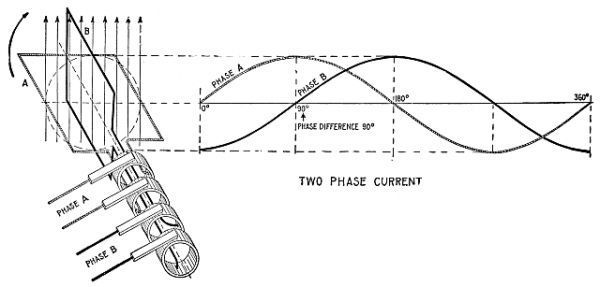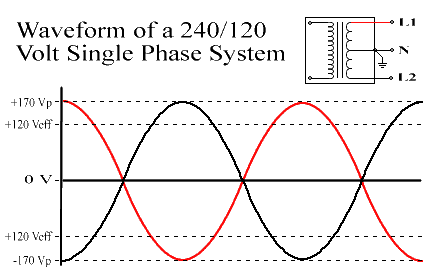Yes, 2 phase is still in limited use. Wiki lists parts of Pensilvania as well as part of Connecticut as still using it. I think part of the confusion is that true 2 phase requires 4 conductors, 2 for each phase, whereas single phase is delivered with only 2, a hot and a neutral.
I think there is kind of a crossover in descriptive terms. When we have a center tapped transformer, we can properly call it "split phase", because half the winding provides "phase A" and the other half "phase B", so it's technically proper to call it "dual phase"or "split phase". Easy transition to "2 phase", but truly a little different animal. When you split a single phase, which contains the entire sine wave of a "phase", you only get either the voltage swing from zero to positive, with the peak of the sine wave at whatever voltage half the whole winding is providing, in our case here in the US, that's about 120VAC. Or, you could get the "other" half of the sine wave, which swings from zero to the "negative" peak, which reaches the same voltage as the other half. They are symmetrical. Then enter the time domain. There is a period on split single phase during which the voltage is zero. That's while the power swings to the other side of zero. So that pair of wires just waits while the other gets the other half of the sine wave. Think of zero being represented by the neutral wire. It's always at zero potential. Then all our comparisons reference that neutral as the mid-point of our entire phase cycle. So half the time each "hot" leg of our single phase system is at zero volts while the other leg gets the other peak and hence is hot. Then when you are using 240, and not using the neutral as a reference zero, there is only an infinitely small time when the voltage drops down the sine wave and crosses] the zero voltage line, but various factors make this "zero crossing" insignificant for most applications, like motors for instance. Then you properly measure the available voltage from "peak to peak" or "P-P". The reasons behind this are a little complicated, and I don't know enough about them to truly provide a good explanation.
Now, all the real electrical engineers can come in and clear up any details I have gotten wrong, or shoot the whole things down. If I have a gross misunderstanding of the subject, I hope they do. I'm sure they could at least add something, or maybe give a better explanation, but that's how I have it in my mind, anyway, for what that's worth .



